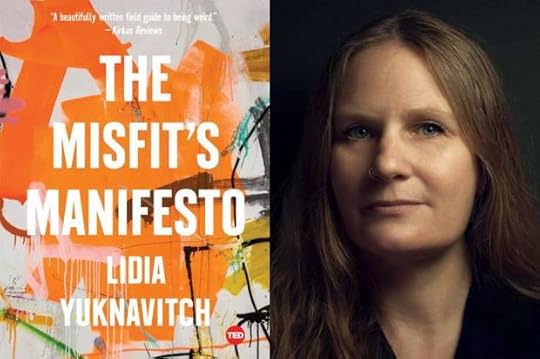Lily Salter's Blog, page 243
November 11, 2017
CIA chief Mike Pompeo contradicts Trump, says Russia meddled in 2016 election

CIA Director Mike Pompeo answers questions at the Center for Strategic and International Studies (CSIS) in Washington, Thursday, April 13, 2017. Pompeo denounced WikiLeaks, calling the anti-secrecy group a "hostile intelligence agency." (AP Photo/Pablo Martinez Monsivais) (Credit: AP)
After President Donald Trump said he believes Russian President Vladimir Putin has been sincere in his denials that Russia didn’t interfere in the 2016 election, CIA director Mike Pompeo, contradicted the president on Saturday and said he stood by the assessment of U.S. intelligence agencies.
In January, the intelligence community released an assessment which said multiple agencies had agreed that Russia made attempts to interfere in the election.
While on Air Force One early on Saturday Trump told reporters that Putin told him his country did not attempt to meddle in last year’s election, but the Kremlin’s press secretary denied that the topic had been discussed at all.
“He said he didn’t meddle, he said he didn’t meddle. I asked him again. You can only ask so many times,” Trump said.
But on Saturday afternoon the CIA made it quite clear that the president, and Pompeo had a much different position on the matter.
“The Director stands by and has always stood by the January 2017 Intelligence Community Assessment entitled: Assessing Russian Activities and Intentions in Recent U.S. Elections,” the CIA said in a statement when asked about a reaction to Trump’s comments earlier in the day, CNN reported.
The agency added, “The intelligence assessment with regard to Russian election meddling has not changed.”
Trump also took direct shots at former members of the intelligence community such as James Comey, John Brennan and James Clapper.
“I mean, give me a break, they are political hacks,” Trump said. “So you look at it, I mean, you have Brennan, you have Clapper and you have Comey. Comey is proven now to be a liar and he is proven now to be a leaker. So you look at that and you have President Putin very strongly, vehemently says he had nothing to do with them.”
While in-depth details about what exactly occurred during the 2016 election are not, and may never be, completely understood, Trump has dangerously shown zero concern over the issue repeatedly.
Special counsel Robert Mueller and multiple committees on Capitol Hill are probing Russia’s alleged attempts as well as potential connections that the Russian government may have had with Trump’s campaign.
It’s been reported that various members of the campaign have strange ties to the country and Mueller has already landed two indictments which include Trump’s former campaign chair, Paul Manafort, and his business associate, Rick Gates. On the same day the two were indicted it was revealed that George Papadopoulos, a former foreign policy adviser to the Trump campaign, pleaded guilty to lying to the FBI in his original interviews about contacts with Russia.
The Justice Department affidavit showed that Papadopoulos proposed to establish a meeting between then-candidate Trump and Putin during a meeting on March 31, 2016, in which both Attorney General Jeff Sessions, and Trump, attended.
In two congressional testimonies earlier this year, Sessions categorically denied having contacts with Russians, or that he was aware of any contacts with Russians. Only recently, did he admit that he now remembers Papadopoulos’ proposal.
86 percent of women in jail are sexual-violence survivors

First Lady of NYC Chirlane McCray visits inmates at the Rikers Island Prison Complex in Queens.
According to a recent study, 86 percent of women who have spent time in jail report that they had been sexually assaulted at some point in their lives. As well, while women represent just 13 percent of the jail population between 2009 and 2011, they represented 67 percent of the victims of staff-on-inmate sexual victimization. Sexual violence is so pronounced among jailed and incarcerated women that Sen. Cory Booker, (D-NJ,) labeled the overarching phenomenon as “a survivor-of-sexual-trauma to prisoner pipeline.”
These numbers come from the Vera Institute of Justice, which authored a survey last year titled “Overlooked: Women and Jails in an Era of Reform.” Given the rising numbers of incarcerated women, specifically in local jails, and the lack of research on them, the Institute wanted to examine who those women were and what adversities they faced. Other findings were equally alarming as those above.
Two thirds of the women in jail are of color, and the majority of that population is also low-income. Further, nearly 80 percent of the incarcerated are mothers, most of them raising a child without a partner. Eighty-two percent were incarcerated for nonviolent offenses, while 32 percent have serious mental illness and 82 percent suffer from drug or alcohol addiction. Finally, 77 percent of those polled were victims of partner violence and and another 60 percent experienced caregiver violence.
First Lady of New York City Chirlane McCray, who works with women at Rikers Island, added that in addition to the prevalence of sexual assault, abuse and trauma present in the lives of the majority of incarcerated women, “women are often trapped in a lower-paid status,” she told Salon on a recent episode of “Salon Talks.”
This economic reality is often what inspires the crimes that end up landing these women in local jails in the first place. Laurie Garduque, the criminal justice director of the MacArthur Foundation, which co-published the survey, told Salon that many women end up in jail because of “crimes of poverty.” During the survey, she encountered women who were jailed for reasons like unpaid parking tickets, stealing discount clothes for their children and for failing to show up to court.
“A lot of people are there because they haven’t paid their fines and fees, haven’t paid their child support, have outstanding bench warrants,” she added. Beyond that, many are forced to stay in jail awaiting pre-trial because they have no resources to pay cash bail.
The survey found that in 2012, 36 percent of women were being held in a pre-trial unit in Massachusetts because they could not afford bail amounts of less than $500. Given that Black and Latina women live at low-income rates disproportionate to the white population, they are also the cohorts most impacted by the cash bail system.
Simply, the economic realities for women compounded by the economic realities for people of color combine to create a system where members of certain at-risk populations awaiting trial may spend significant time behind bars for minor offenses they were compelled to commit regardless of whether they are convicted of them or not. “It’s really a revolving door,” Garduque said.
Garduque also emphasized another point. “Over the same period of time where we’ve seen a growth in incarceration with respect to prisons, we’ve seen growth and the reliance of jails,” she continued. “So they’ve become transformed, devoted less to protecting public safety and more in line with housing poor people, and people with behavioral health issues, or where other systems have failed them.”
Many of these problems only mount once a woman is jailed as “most jail environments were not designed with them in mind and do not take into account the particular adversities they have experienced,” the report says. Garduque explained that many jails are not equipped to deal with gynecological issues, pregnancy, menstrual cycles or the fact that the majority of women in jail retain custody of their children.
All of this data points to a striking problem in criminal justice reform. Policymakers tend to address reform in stages, prioritizing some populations and leaving others vastly overlooked. Because women still represent a small percentage of the jail population, “the jails have not focused their time or resources to think about what specifics needs need to be addressed,” Garduque said. “That’s why jail, in many respects, will make women even worse off.”
Overall, though the population of 1.2 million women currently supervised by the criminal justice system in many ways mirrors that of incarcerated men, being that both disproportionately house affect the low-income population and people of color. Yet, reformers rarely include women in the discussion of mass incarceration and criminal justice reform. It’s a striking mistake given the shifting demographics of those behind bars.
While there has been an overall decline in the number of incarcerated men on a local and state level, the same is not true for incarcerated women. In fact, “the rate of growth for female imprisonment has outpaced men by more than 50% between 1980 and 2014,” the Sentencing Project says.
Given that women are the fastest growing jail population in the nation, the MacArthur Foundation’s Safety and Justice Challenge is working with jurisdictions to address the “misuse and overuse of jails” and to reduce jail populations by fostering more equitable justice systems.
The Vera Institute and the MacArthur Foundation see women-specific reforms as the only route forward. “It’s much more complicated than it is for men,” McCray added.
In an attempt to address this, the foundation selected various jurisdictions with different resources to demonstrate that “regardless of their resources,” Garduque said, “if they have the political will, and if they have the knowledge and information, that they can enact the reform to eliminate unnecessary use of jail and still address the issue of racial and economic disparity.”
There has been a tentative response to the plight of incarcerated women in Congress as well. In July, Booker proposed a new bill titled “the Dignity for Incarcerated Women Act” cosigned by Democratic Senators Elizabeth Warren, Kamala Harris and Dick Durbin. According to Slate, some of the provisions include a ban on the shackling or placing in solitary confinement of pregnant inmates.
Further, the bill would require prisons to provide free menstrual products for those awaiting trial and bar male guards from supervising female inmates in bathrooms, except during emergencies. Inmates would no longer be charged for calling friends and family members. The bill would also consider the placement of incarcerated women who are mothers in relation to their families, and foster more accessible communication and visitation between mothers and their children in general.
These and other proposed reforms contained within the Dignity Act fall in line with what the Vera Institute urges. Yet, the Dignity Act would only apply to women in federal prisons. Even with its passage, things would not necessarily change for the number of individuals jails and state prisons who make up the overwhelming bulk of the incarcerated women in the United States.
Still, the act’s passing would be a step forward for many and, perhaps, a motivation for state and local authorities to reconsider and revise their own practices.
Whatever the case, the already dire situation for women behind bars — and quite specifically in jail — erodes further toward the inhuman with every passing day. It’s a systematic crisis that, by now, has transcended the legal and the logistical to take on the dimensions of a moral emergency.
“I know there’s a lot going on right now,” Booker told Refinery 29, referring to the political climate. “But you can always judge the greatness of a society by looking at who it imprisons and how it treats them.” By that measure, the United States has much to do in order to claim any kind of greatness.
November 10, 2017
The long, strange history of dieting fads

(Credit: AP/J. Scott Applewhite)
“Of all the parasites that affect humanity I do not know of, nor can I imagine, any more distressing than that of Obesity.”
So started William Banting‘s “Letter on Corpulence,” likely the first diet book ever published. Banting, an overweight undertaker, published the book in 1864 to espouse his success after replacing an excessive intake of bread, sugar and potatoes with mostly meat, fish and vegetables.
Since then, fad diets have appeared in many forms. To what length will people go to achieve their desired figure? As a professor of nutrition and eating behaviors, my sense is the history of dieting shows vanity outweighs common sense.
Liquid-based diets
Let’s jump back to 1028, the year William the Conqueror was born. Healthy most of his life, he became so overweight in later years that he went on a liquid diet consisting of almost nothing but alcohol. He lost enough weight to resume riding his cherished horse, but a riding accident soon led to his untimely death.
We do know of one case in which consuming more alcohol than food allegedly led to longevity. In 1558, Italian nobleman Luigi Cornaro restricted himself daily to 12 ounces of food and 14 ounces of wine. Rumor has it he lived to a ripe 102 years of age, earning his approach the nickname The Immortality Diet.
Another alcohol-focused plan, The Drinking Man’s Diet, was introduced in the 1960s. This included so-called “manly” foods like steak and fish, along with as much alcohol as desired.
Poet Lord Byron credited his thin, pale look to vinegar and water. This practice reemerged in the 1950s as the popular Apple Cider Vinegar Diet, which instructs people to drink a mixture of equal parts honey and vinegar. The latest version, although not scientifically supported, claims that three teaspoons of apple cider vinegar before each meal will curb cravings and cut fat.
Cleanses
“Cleaner” liquid diets, cleanses and detoxes are designed to supposedly rid the body of toxins, despite our natural ability to do so.
In 1941, alternative health enthusiast Stanley Burroughs created the Master Cleanse, or Lemonade Diet, to eliminate cravings for junk food, alcohol, tobacco and drugs. All you had to do was consume a mixture of lemon or lime juice, maple syrup, water and cayenne pepper six times a day for at least 10 days. Beyoncé made this popular again in 2006, saying she lost 20 pounds in two weeks.
TV physician Dr. Oz and others have since promoted their own versions, varying in length and foods allowed. Most include a daily laxative and copious amounts of water.
The Last Chance Diet, published in 1976, consisted of drinking a very low-calorie liquid a few times per day. The main ingredient was a blend of predigested animal byproducts — think hide, horns and tendons. This “meat smoothie” was taken off the market after several followers died.
More recently, the Green Juice plan became popular. Many were captivated by the promise of a deep cleanse or quick weight loss, while others saw it as an easy way to consume more fruits and vegetables. One of the original recipes called for apples, celery, cucumber, kale, lemon and ginger.
Celebrity diets
Andy Warhol had a different approach to maintaining his physique. He reportedly ordered foods he disliked when out at restaurants, asking for a to-go box upon leaving. He would then give this to a homeless person.
Sleeping was another possibility. Elvis Presley was rumored to be an advocate of the Sleeping Beauty Diet. Its long pill-induced sleeping bouts were said to inhibit eating.
A more recent effort to mimic celebrities, the Hollywood 48 Hour Miracle Diet was joined by the Hollywood 24 Hour Miracle Diet, the Hollywood Daily Miracle Diet Drink Mix Meal Replacement and various dietary supplements.
Get slim quick
In the early 1900s, overweight businessman Horace Fletcher slimmed down and made dieting a pop culture phenomenon with his Chewing Diet. He recommended chewing food until it became liquid to prevent overeating.
Another method rumored to be popular in the early 1900s was the Tapeworm Diet. Theoretically, one would swallow a tapeworm or tapeworm pills. The worm would then live in your stomach and consume some of your food. While vintage advertisements have been found, there is no evidence that tapeworms were actually sold.
Other diets have allured fans over the years with the promise of easy weight loss through a single miraculous food. There’s the Grapefruit Diet, which recommends half a grapefruit before every meal; The Peanut Butter Diet and the Ice Cream Diet, both promising as much of said food daily as desired; and the Shangri-La Diet in 2006, which claimed you could beat hunger by drinking olive oil about an hour before each meal.
One standout example was the Cabbage Soup Diet, first popularized by celebrities in the 1950s. This diet involved consuming nothing but soup for seven days. The original recipe called for cabbage, vegetables, water and dry onion soup mix, but other renditions added ingredients like fruit, skim milk and beef. It became trendy again every ten years or so, with the internet making it easier to share.
Alternative ideas
Some diets and their supporting theories went beyond food.
In 1727, writer Thomas Short observed that overweight people lived near swamps. His Avoiding Swamps Diet thus recommended moving away from swamps.
Instead of moving away from swamps, Breatharianism recommends not eating. Followers in a 2017 interview claimed food and water are unnecessary, saying they subsist on spirituality and sunlight alone. The prolonged fasting would eventually lead to starvation, but devotees have been spotted eating and drinking.
The more dangerous Cotton Ball Diet surfaced in 2013. Dieters reported consuming up to five cotton balls at a time, saying they felt full and lost weight. With its unfortunate side effect of intestinal obstruction, this diet faded away.
But not all unusual ideas are bad. The Seven Day Color Diet, published in 2003, suggested eating foods of only one color each day. For example, red day would include tomatoes, apples and cranberries. This actually emphasizes healthful foods to include, rather than crazy concoctions or restrictions.
While intriguing, fad diets are usually short-term quick fixes. They may produce initial rapid weight loss, but this is more likely due to their lower calorie intake than the follower’s usual diet, and often consists of water loss.
 Instead, we should remember that there’s no simple secret to losing weight. Achieving sustained weight loss and maintenance requires reducing your calorie intake and increasing your activity levels — with or without grapefruit and cabbage.
Instead, we should remember that there’s no simple secret to losing weight. Achieving sustained weight loss and maintenance requires reducing your calorie intake and increasing your activity levels — with or without grapefruit and cabbage.
Melissa Wdowik, Assistant Professor of Food Science and Human Nutrition, Colorado State University
Synthetic sex in yeast promises safer medicines for people

(Credit: AP)
Our old friend Saccharomyces cerevisiae – the yeast that’s helped people bake bread and brew beer for millennia – has just had its sex life upgraded.
Bioengineers at the University of Washington have reprogrammed the mating habits of this single-celled organism, letting the fungus get it on like never before. The result? A sexual revolution that could lead scientists to safer future medicines.
Yeast as lab guinea pig
We already rely on yeast for a lot more than just fermented food. Much of our modern understanding of genetics and cell biology has come from careful study and manipulation of the fungus.
Scientists and drug designers love working with yeast because of its rapid cell cycle (a new generation is born every 90 minutes) and the relative ease with which its genes can be tweaked. Even human genes and genes encoding protein-based drugs can be spliced in, allowing researchers to study them in the lab in detail. Anti-cancer drugs have been optimized this way.

Our species’ relationship with yeast predates our use of gold, horses and writing.
Ian Haydon, CC BY-ND
One of the most popular techniques for this type of biomolecular research is known as yeast surface display. Using this method, a gene can be added to yeast and the protein that results will appear on the easily accessible outer surface of the cell. With a new protein displayed on the surface, researchers can easily determine what other biomolecules the protein interacts with.
This method, pioneered in the laboratory of Dane Wittrup, exploits aspects of the fungus’ sexual machinery.
Yes, even single-cell microbes can have sex. But as is often the case outside the animal kingdom, the way DNA gets swapped can seem unusual to human observers.
Fungal fornication
The terms “male” and “female” don’t really apply to budding yeast. Instead of forming sperm or eggs, the sex cells of yeast all look the same – like tiny, single-cell blobs. What makes two yeast blobs able to sexually reproduce are their so-called mating types.
The proteins that decorate the outside of a yeast sex cell, or gamete, determine that cell’s mating type. Put on copies of one protein and you’re one mating type; swap them out for a different protein and you’re the other. Agglutination (the unsexy term for yeast sex) only happens when the surface proteins of yeast gametes from opposite mating types interact.

Single-celled yeast as seen under a scanning electron microscope.
Mogana Das Murtey and Patchamuthu Ramasamy, CC BY-SA
Inspired by this molecular precision, a team of synthetic biologists led by University of Washington graduate student David Younger realized they could convert the natural yeast mating system into a new tool that would let them precisely measure molecular interactions at a much larger scale.
Though tiny and difficult to measure, molecular interactions are a big deal in drug design. Virtually every drug works via specific interactions with its target, and drugs that bind where they shouldn’t can be lethal.
Some experts blame off-target interactions for last year’s failed phase III clinical trial of Alnylam Pharmaceuticals’ revusiran, an RNA drug designed to treat a rare heart disease. Nineteen people died before the trial was called off, and the company’s stock took a US$3 billion hit.
Figuring out whether a new drug binds what it’s supposed to is relatively easy; figuring out whether it binds anything else in our cells is tough. Established laboratory techniques like yeast surface display have helped scientists screen new drugs for potentially dangerous off-target interactions before they make it to clinical trials, but that technique lets you look for off-target interactions only one at a time. Younger’s team envisioned a way to test hundreds of drugs against thousands of potential targets, all by redesigning yeast sex.
Redesigning yeast sex with multiple mating types
To start, Younger needed a way to precisely measure mating efficiency in lab-grown yeast. Perfect efficiency would mean every cell that could fuse would do so. The more efficient the mating, the better matched the two mating types.
The team linked genetically encoded fluorescent markers – one blue, one red – to each of the natural yeast mating types. That made it simple to measure mating efficiency for a whole yeast population: They could just count the cells that stayed blue or red (unmated) versus those that turned purple (mated). It turns out for typical yeast grown in the lab, mating efficiency is around 60 percent.

Example of fluorescent-tagged yeast, in this case red and green. Together the markers look yellow.
Masur, CC BY-SA
The team then deleted the natural agglutination proteins and replaced them with a pair of foreign proteins known to interact weakly. The mating efficiency dropped tenfold to 5.7 percent. They swapped in another pair and saw it rise to 19 percent. When they tried a third pair of proteins known to interact with much higher affinity, mating efficiency rose to 51.6 percent – close to what was seen in natural agglutination.
Just by tracking mating efficiency, the team could tell how strongly any two protein molecules interact. When they checked a pair of proteins that shouldn’t interact at all, mating efficiency was a meager 0.2 percent.
Now, instead of just the two natural mating types, scientists can quickly engineer thousands of “sexes” by coaxing individual yeast to decorate the outside of their cells with new, human-specified proteins. If a pair of new mating types are sexually compatible – meaning the proteins decorating their cell surfaces interact – their offspring will rise in number. By tallying up each genetically distinct offspring in a tube not much bigger than a thimble, thousands of potential molecular interactions can be quantified.
Improving drug safety
To show that their new tool could aid in drug development, the team generated 1,400 distinct variants of an emerging anti-cancer drug known as XCDP07. The drug is supposed to disrupt the unrestrained growth of cancer cells by binding specific cellular targets, but as with every drug, significant off-target interactions could render it useless. By mixing yeast displaying different versions of the drug with other yeast displaying human proteins, the team was able to identify versions of XCDP07 which only bound to the intended target.
Younger is working to get his new tool into the hands of more scientists. He’s already gifted his engineered yeast strains to eager researchers at Stanford, Yale, UCSD and beyond. Concerns over the cost and safety of emerging drugs have motivated him to start a company – funded by scientific grants, not investors – to turn his results into the next generation of medicines. Younger says the goal is to provide “comprehensive preclinical drug screening, rather than the current practice of screening a very small subset of possible off-target interactions.”
 The next blockbuster drugs may owe a debt to yeast and their mating practices. Who says you can’t teach an old fungus new tricks?
The next blockbuster drugs may owe a debt to yeast and their mating practices. Who says you can’t teach an old fungus new tricks?
Ian Haydon, Doctoral Student in Biochemistry,University of Washington
Apology or no apology, Louis C.K. is screwed

Louis C.K. (Credit: AP/MediaPunch)
On Thursday, the New York Times published yet another bombshell exposé, unveiling sexual misconduct allegations against comedian, director, writer and producer Louis C.K. Five women went on the record to recount interactions with the prominent comedian and producer in which he masturbated or asked to masturbate in front of them.
Comedians Dana Min Goodman and Julia Wolov were among the five accusers who said Louis C.K. invited them to his hotel room to celebrate after a late-night show. Upon their arrival, the comedian “asked if he could take out his penis,” which the women took as a joke.
“And then he really did it,” Goodman told the Times. “He proceeded to take all of his clothes off, and get completely naked, and started masturbating.”
On Friday, Louis C.K. released a statement about the allegations in a letter read as an ultimately compromised apology for his actions. Questions about why he waited so long to address the longstanding rumors that have, according to his own admission, turned out to be true, remain. Other aspects of his apology have also drawn criticism in some circles.
Nonetheless, his statement stands as a rare, so far singular, instance of a celebrity admitting wrongdoing in a time when so many other notable men — Harvey Weinstein, Kevin Spacey, Dustin Hoffman, James Toback, Oliver Stone, Bill O’Reilly, Eric Bolling, Roy Moore and Donald Trump to name a few — have faced similar accusations and steadfastly and defiantly declared themselves free of guilt.
While Louis C.K.’s rare mea culpa may preserve his good standing with his many fervent fans, it also seems that in our current, highly reactive climate, it comes too late. Certainly, the industry is rapidly turning its back on the star.
In response to the accusations, several companies have severed their ties to Louis C.K. Most prominently, the Orchard, the distribution company that owns the rights to his forthcoming film, “I Love You, Daddy,” cancelled the release of the the already controversial movie, which was scheduled to come out Nov. 17, reported Time Magazine.
In the film, Louis C.K. plays a writer and producer who is trying to keep his teenage daughter (Chloë Grace Moretz) from getting sexually involved with a 68-year-old director (John Malkovich). The Times pointed out that the film, in addition to his often sexual comedic skits in which he pretends to masturbate, reads as either a confession or a deflection. In retrospect, it is a wonder it ever got made.
One esteemed writer and cultural critic wondered out loud:
I can't stop thinking how Louis CK was so confident in the system continuing to enable him that he made, "Daddy, I Love You."
— roxane gay (@rgay) November 10, 2017
Given that the Orchard has already made the emphatic move of saying that it will not distribute the film, selling its rights would appear a public capitulation of sorts. Subsequently, allowing another company to purchase and distribute “I Love You, Daddy” may be out of the question, and the film — much like some of Kevin Spacey’s work — may never see the light of day.
HBO, FX and Netflix are among the companies that are reviewing or have backed out of Louis C.K. projects. Netflix has already canceled production of a C.K. stand-up special and HBO has rescinded his invitation to appear on “Night of Too Many Stars,” a charity event for autism that will feature celebrities like John Oliver and Olivia Munn with Jon Stewart as host, according to Variety and the Hollywood Reporter. HBO has also removed C.K.’s projects from its streaming services.
Perhaps most crushing of all for Louis C.K. is the Friday news that FX — the channel that was the home of the comedian’s well-regarded show “Louie” as well as series he produced including “Better Things,” “Baskets” and others — has now parted ways with the him in a statement that reads:
Today, FX Networks and FX Productions are ending our association with Louis C.K. We are cancelling the overall deal between FX Productions and his production company, Pig Newton. He will no longer serve as executive producer or receive compensation on any of the four shows we were producing with him – “Better Things,” “Baskets,” “One Mississippi” and “The Cops.”
Louis has now confirmed the truth of the reports relating to the five women victimized by his misconduct, which we were unaware of previously. As far as we know, his behavior over the past 8 years on all five series he has produced for FX Networks and/or FX Productions has been professional. However, now is not the time for him to make television shows. Now is the time for him to honestly address the women who have come forth to speak about their painful experiences, a process which he began today with his public statement.
A similar statement was released by Louis C.K.’s longtime management firm 3 Arts Entertainment at the same hour. “We have terminated our relationship with Louis C.K. We are committed to ensuring a safe and secure environment for our staff, clients and the community at large,” the company said. “We are doing a full internal review regarding this situation and are taking additional steps to strengthen our processes and procedures while engaging with our staff to address any concerns about harassment or abuse of power. This behavior is totally unacceptable in all circumstances and must be confronted and addressed.”
Other celebrities, including those in the notoriously self-protecting comedy community, reacted to the news on Thursday night after the Times story broke. Gregg Rogell, Jim Norton and Judy Gold addressed the allegations at New York’s Comedy Cellar, reported Vulture. “Do you guys mind if I masturbate in front of you? Would that be a problem?” Gold joked.
While their denunciations were less complete or committed as those of FX, the Orchard and other companies, it is still notable that comedians are finally addressing a subject many of them knew about, but didn’t deign to speak of onstage.
The world of comedy is an insular place with a loosely observed code of silence. There’s plenty of internal gabbing and squabbling, but comedians rarely assail other comedians in public. That the performers above and others on Twitter (who have been far more damning) are beginning to speak up shows the extent to which Louis C.K. has lost his once considerable sway.
All in all, it paints a picture of a non-coordinated but near universal rejection of Louis C.K. by the industry, one that closely resembles the seemingly permanent banishments handed down to Weinstein and Spacey once their long-rumored alleged trespasses became public knowledge. Add that to the sense of betrayal many feel toward this intermittently enlightened, progressive performer, and he is, for the moment, well and truly screwed.
There are some key differences here, however, which may suggest that Louis C.K. is not without some hope of an eventual return.
First, there is the fact that, relative to the many other charges leveled against many other men in the last four weeks, Louis C.K. is not accused of rape, of abusing a minor, or of consistent sexual assault. He harassed, he suppressed, he shoved a woman, he performed sex acts on himself without the consent of those viewing it. Yet, those crimes pale in the eyes of the public compared to say, the accusations against Weinstein or Toback. In short, his road toward forgiveness is simply not as long.
As well, there is his fanbase, which, even now, supports him. Weinstein, Toback, Spacey and others can’t boast the truly loving following Louis C.K. has. While many may reject him in the short run he will, like O’Reilly, have a crew of lifers to carry him through.
Finally, there is the nature of what happened over the last 24 hours. The fact that Louis C.K. admitted to and apologized for his behavior will be remembered no matter how disingenuous parts of his confession are. Unlike others, he has denied nothing.
As well, the speed at which Hollywood distanced itself from him was record-setting. Perhaps with a script to follow thanks to Weinstein and Spacey, companies now respond quickly and decisively to such allegations in hours rather than days. Simply, the Band-Aid has been torn off and the wrangling is over. Perhaps other women will come forward, but Louis C.K.’s descent was near immediate, and played out over a single news cycle. Given that it took so little time to execute, it will, to many, be easier to either forgive or forget (not that anyone must do either of those things).
Just over 24 hours after the Times report surfaced, Louis C.K. is already positioned to begin the rehabilitation process. That is, to an extent, unfair. The root of his problem has not been addressed even if his punishment has been handed out. Regardless, the potential for a comeback is there.
But as for “Louie,” all those standup specials, “I Love You, Daddy” and so on, they’re gone, parts of the past. Whatever cultural capital Louis C.K. built up over the decades is gone.
Writing in New York Magazine, Matt Zoller Seitz declared in a headline “Louis C.K. Is Done.” There he speaks of legacies, of Louis C.K.’s work being “Of Archival Interest Only,” and of whether we can enjoy his comedy at all. It reads, appropriately perhaps, like an obituary for a career. Indeed, it’s hard to disagree that the future Zoller Seitz describes of “moving on to something new — not just new work, but a new paradigm for relationships in show business, and all business,” is exactly what should happen.
Perhaps Seitz is being too optimistic. Perhaps he’s too assured that all these allegations are lowering our tolerance for misconduct rather than raising it.
For Louis C.K. to be fully, permanently screwed, for him not to be able to take advantage of the elements listed above that might allow him to return to public approbation — much as Mel Gibson has — there must be some sort of massive and underlying shift in American culture. So far, we’ve seen a lot of #MeToo, but we haven’t seen men, the responsible agents here, change all that much.
If things stay even half as they were before Louis C.K. got sucked into Weinstein’s whirlpool, then he will not stay down for long. But it will not matter. If that turns out to be the case, it is us who will be truly screwed.
Tears for Fears’ new greatest hits record is a hello — not a farewell

As the fourth quarter of the year gathers steam, record labels are padding year-end sales — and, let’s be honest, making holiday shopping easier — by rolling out greatest hits albums. To date, Green Day, Pitbull, Five Finger Death Punch and Steve Miller have released or will be releasing hits collections. This week, Tears for Fears — the duo of Roland Orzabal and Curt Smith — join the retrospective fray with their own highlights collection, “Rule the World: Greatest Hits.”
It might be tempting to skip over this one; after all, the band has myriad greatest hits compilations, all with similar track listings. But “Rule the World” is the rare compilation that makes familiar songs sound fresh, thanks to its smart sequencing.
The frosty sophisti-pop of “Advice for the Young at Heart” segues directly into “Head Over Heels,” a monumental song with brittle strings and cascading piano chords, and then the stunning and ambitious “Woman in Chains.” The funky holler “Mothers Talk” precedes the exuberant and timeless “Break It Down Again.” Later in the album, the jazz-inflected torch song “I Believe” leads into the majestic title track of 1995’s “Raoul and the Kings of Spain,” Tears for Fears’ most underrated record. On the latter, periods of glacial keyboards alternate with gnarled storms of electric guitars.
Because hits such as “Shout” and “Everybody Wants to Rule the World” remain radio staples, it’s easy to take Tears for Fears for granted. But “Rule the World” is a striking reminder of the band’s singular sound and approach. Tears for Fears’ music reflects a mosaic of influences and eras, in large part because the band’s identity is slippery. On some songs, they’re a prog act that worships the Beatles; on others, they’re new-wave bookworms. Occasionally, they’re psych-pop perfectionists, while at times they’re even electronic mad scientists. Perhaps more impressive, these approaches somehow all always work. Even Tears for Fears’ very-’80s production (cavernous drums, arena-tweaked guitars, tinny keyboards) sounds massive, not bloated or indulgent.
But “Rule the World” isn’t any sort of career-capper. If anything, this hits collection finds the Tears for Fears reintroducing themselves to the U.S. market. That might sound strange, but consider this: Although Tears for Fears have toured the States more consistently in recent years — including a co-headlining trek with Hall & Oates earlier this year — they haven’t released a full-length since 2004’s “Everybody Loves a Happy Ending.” According to a mid-2016 press release, a new studio album is in the works, although the 2017 release date promised then seems unlikely.
But “Rule the World” does contain two brand-new Tears for Fears songs, and they’re both excellent. “Stay” begins in a haze of intimate acoustic guitars, before incorporating a percolating underbelly with drip-coffee beats and keyboards the consistency of cotton candy. The conspiratorial synth confection “I Love You But I’m Lost” is even better; more concise and pop-oriented, the tune boasts a gigantic hook with brassy production.
The songs ache with the sort of longing many established bands simply can’t capture (much less recapture), and exude emotional urgency. The latter quality is also missing in new music from veteran acts — and it’s often the difference between pleasant (but unmemorable) songs and ones that merit repeated listens.
Prior to the release of these songs, Tears for Fears’ last new studio music took the form of covers. For Record Store Day 2014, the band issued a 12-inch with covers of songs by a trio of well-regarded electro-leaning bands: Arcade Fire (“Ready to Start”), Animal Collective (the danceable “My Girls”) and Hot Chip (a soulful “And I Was a Boy from School”). These covers are also inspired: “And I Was a Boy from School” echoes the tortured nostalgia of 1983’s “The Hurting” LP, while “My Girls” is a positively weird explosion of splotchy electronic production, hypnotic vocal twinning and neon-hued effects.
That love of modern music bleeds into Tears for Fears’ concerts. During this year’s tour with Hall & Oates, the band put a decidedly contemporary spin on “Change” — adding modern digital lacquer in the form of slipshod synth grooves and beats, both of which served the song especially well on its grinding breakdown — and amplifying the electronic elements of “Mad World” and “Pale Shelter.” Messing with beloved songs is always a risky move; after all, the line between embarrassment and enhancement can be rather narrow. But these upgrades worked: These songs didn’t sound like ’80s relics, but fresh starts.
Tears for Fears’ commitment to pushing their sound forward is admirable — although, as fans will note, absolutely nothing new. (If there’s one consistent thing about Tears for Fears, it’s, ahem, sonic change.) And while they aren’t and have never been the most prolific band, this quality control means what music they do release is worth the wait.
The Miracle Mop: $3 billion later

(Credit: YouTube/Shutterstock)
It’s been 25 years since Joy Mangano launched the self-wringing Miracle Mop, setting the stage for what would make her one of the most powerful brands in home shopping, generating more than $3 billion in sales with her products, and one of the most successful female entrepreneurs.
Many know her story, from single mother of three to self-made millionaire, through the 2015 20th Century Fox film “Joy,” written and directed by David O. Russell and starring Jennifer Lawrence as Joy. Lawrence was nominated for an Academy Award for her performance.
Hollywood ending aside, Mangano has created more than 100 inventions since the Miracle Mop and learned valuable lessons along the way that she wants to pass onto entrepreneurs and inventors. “Success starts with discovering what ignites you, what makes you passionate,” Mangano told Salon’s Alli Joseph on “Salon Talks.”
In Mangano’s new book, “Inventing Joy: Dare to Build a Brave & Creative Life,” she talks about growing up in Brooklyn and how she was only expected to get married, have children and cook for her family; but “to go through divorce and then be trying to start a business,” she said, “everybody came to screeching halts and I had to find that courage within myself and I had to keep moving forward. I created those open windows for myself, and if the path shifts, that’s okay.”
“Don’t feel like you’ve missed opportunities, you have to take those opportunities and go with where they lead you,” Mangano said. She added, “You can create your own success if you let those doors open in your mind.”
Watch the video above to hear why Mangano believes constant rediscovery is critical for self-awareness and success. And watch the full “Salon Talks” conversation on Facebook.
Tune into SalonTV’s live shows, “Salon Talks” and “Salon Stage,” daily at noon ET / 9 a.m. PT and 4 p.m. ET / 1 p.m. PT, streaming live on Salon and on Facebook.
Lidia Yuknavitch and the misfit hero’s journey

Lidia Yuknavitch (Credit: Ted Books/Andrew Kovalev)
Lidia Yuknavitch is an unlikely motivational icon. As she’s chronicled in her viral TED Talk and her previous works like “The Chronology of Water,” she’s spent much of her life on the outer edges. As she says in her newest book, “So yeah. I’m the kid who got hit in the face during dodgeball,” the one who’s faced grief and depression and not always in the most tidy, seemingly heroic ways. All of which makes her a world class expert on how and why outsiders can thrive, the person to write a book called “The Misfit’s Manifesto.“ Part memoir, part guidebook, part testimony from fellow misfits, Yuknavitch’s book is a beacon of hope for all who don’t color within the lines.
Salon spoke to the author recently about the rewards of not fitting in.
For those who are less familiar with your work, why don’t you tell me what a misfit is?
In some ways, I think everyone on the planet has a little piece of misfit in them, because we don’t always feel like we belong. Everybody has hard days or hard years or whatever. The people I’m talking about have usually had some set of fracturing experiences in their life, either dramatic ones or grief ones, or they’re veterans who have been to war or refugees or domestic violence victims. People who slipped out from figuring out how to find the path or an identity that felt stable. The more I talked to people after I did that TED Talk, I realized, “The thing is to get these stories out into the air in the hopes that we can find each other and feel less lonely and freakish.”
How did the book evolve and change as you were writing it and witnessing what has been going on in our country?
There are a few sentences in the book where I couldn’t restrain myself from making an irate comment about different attitudes floating around just now in the era of Trump. While we were putting the stories together, it really was a collaborative effort. The focus changed a little bit too; we need to be finding ways to talk to each other rather than against each other. Collecting people who are ordinarily viewed as having issues or problems or some brokenness, and shining light on what we have to give to culture and how we can help other people talk to each other — that shifted the focus altogether.
One of the first things is you bust that myth of the nobility of suffering. It seems really important.
It is to me. I do understand the underpinnings of that idea, and I get that we all unconsciously believe that. When I started thinking about it, the actual suffering part is terrible.
We have this image about the suffering body, and you being closer to grace when you’re suffering. Anyone who’s suffering knows what you feel close to is dead. You don’t feel grace. The grace that comes later is the story we place over it. Even though I don’t have some magical answer about what suffering is or isn’t, I do know that there’s more than one story, and that if we multiply the stories, we can maybe feel less like we’re failing in our own suffering.
That also speaks to this idea of forced heroism.
Yes. I make a crappy hero. I’ve never achieved it. I’m often identifying with the villain character, or sometimes with the side characters who don’t really get to carry the sword or anything and feed the horses. That myth of the hero — I’m not trying to kill it or say it doesn’t exist. I’m just saying there are a variety of other storylines and other bodies out there that have never fit the hero’s journey. What if we sometimes tell those stories?
It does feel like a lot of the time we impose this idea that you go through a hard time and that’s where something wonderful actually happens. As opposed to, “Sometimes things just suck.”
It sucks for a long time. Some of us never achieved any kind of transcendent moment. Maybe no one does. Maybe everybody is just telling a fiction that it even exists.
Maybe I just want to interrupt the suffering story and put a little area in there for those of us who just aren’t buying that trajectory.
You’re also very clear that it doesn’t mean that you don’t find meaning in suffering.
I’m a lifelong swimmer, and so it’s been useful to think about sitting on the bottom of the ocean when the bad thing has taken your agency away. Once you’re down there, maybe there’s something useful you could bring back to the surface for those of us who are able to survive it at all. That’s a cool story. That’s helped me in my life. The stories other people tell in the book have helped them.
Tell me why it was important for you to talk about the creativity-misfit connection and the way that we find ourselves through the art that we create and through the art that we experience?
That’s a big deal for me. Pain or loss or grief or anger or suffering, they are what they are. There are also doors or windows or portals or opportunities that allow for self-expression. The main narratives we’re given culturally ask you to take your pain and privatize it and then fit into the mono-story. What I’m finding, working with people all over, is that they’re also the threshold where pure imagination can get born. It’s like creation is the other side of distraction. That’s the place I want to open up.
I f you were going to advise someone who maybe feels really lost and is looking for that anchoring in creative expression, how would you tell them to start? I think many times when we’re most lost in life, we don’t even know how to begin.
I try not to advise anyone because the impression is you must follow my lead. I do think a couple of things occurred to me, like finding others like you. Hunting for tribe members or people who smell like you or do things like you so that you’re in a room with others and mercifully not alone all the time. But also trying to figure out how to help others. I know we always feel like we’re in a space of depletion when something too hard is happening. Weirdly, the opposite can be true if you’re helping another person. I don’t mean to sound Mother Teresa, because I also threw some shade at her.
But I do believe just the basic idea — not to save someone else, but just to help someone else even a tiny bit — can take you one step away from the ego of your suffering. That can be useful.
Then, the last thing I’d say is one of my darkest times [was] when I didn’t have a place to live, this wizened old woman friend of mine just gave me a painting canvas. It was a size of a wall of a bedroom, and she didn’t say anything about it. She just put it on her porch and put some paints up there. I had no idea that that would draw me or that I would find an actual space to play out what I was doing on the inside. What I ended up doing was painting this sort of raging crazy looking abstract. It was so big. It was bigger than me. I was putting an expression out that was bigger than me and didn’t have to look like anything. I’m going to remember that day the rest of my life, because someone put the opportunity for self-expression in front of me, which is why I think we need more art in the schools, not less art in the schools.
Where do we go from here? Lidia, I think 80 percent of the time I just feel incredible despair and fear. Then the other 20 percent of the time, I look at my kids, as I’m sure you look at your son, and I feel hopeful. I can see movement in the direction of visibility, of diversity, of accepting diversity as the norm in a lot of places and accepting different kinds of people. It feels like the loudest people are the most terrible. That doesn’t mean that they’re the most people.
That’s right. I feel all those things you’re talking about. Every day, I feel them hourly. I feel them. You wake up and you look at the news; you’re like, “Goddamn it!”
I guess I’m more and more convinced that — not that it’s the answer but it’s a piece of some things that will help — is for us to be always sharing stories and never let what’s happening culturally silence us. We really do know how to be a part of each other and understand each other more together than apart. We really do know how to understand difference. The only way through is together and with each other. My little tiny piece is sharing stories and sharing art as a language for how to stay connected.
This interview has been condensed and lightly edited for clarity.
Roy Moore’s disgraceful fan club: Republican defenders smear accusers, reporters

Roy Moore (Credit: Getty/Scott Olson)
The Washington Post’s bombshell report that Alabama Senate candidate Roy Moore pursued romantic relationships with teenage girls continued reverberating throughout politics on Friday with the National Republican Senatorial Committee formally telling government regulators that it would not be contributing funds toward his campaign.
Most national Republicans have been taking a line that Moore should end his campaign “if the allegations are true” but some, including retiring Arizona Sen. John McCain and former GOP presidential nominee Mitt Romney, have said that Moore should step down.
“Innocent until proven guilty is for criminal convictions, not elections. I believe Leigh Corfman,” Romney tweeted Friday morning, referring to the woman who had accused Moore of molesting her when she was 14. “Her account is too serious to ignore. Moore is unfit for office and should step aside.”
And yet, many local Republican supporters of Moore and his Breitbart News booster Steve Bannon have remained obdurate that their candidate did nothing wrong and is merely being slimed by the fake news media. Some are finding ever-more disgraceful ways to stand by their man.
Ed Henry, an Alabama state representative took the cake in remarks made to a local newspaper in which he condemned the three women accusing Moore for not speaking out sooner, adding that Moore’s alleged victims deserved to be prosecuted. Repeating a frequent refrain of the far-right, he blamed “the establishment” Republicans for the allegations.
“If they believe this man is predatory, they are guilty of allowing him to exist for 40 years. I think someone should prosecute and go after them. You can’t be a victim 40 years later, in my opinion,” Henry told the Cullman Times.
Prominent fundamentalist evangelical Jerry Falwell Jr. came to Moore’s defense in a statement which claimed that the word of a twice-censured former judge outweighed the Post’s careful account based upon interviews with more than 30 people.
“It comes down to a question who is more credible in the eyes of the voters — the candidate or the accuser,” Falwell Jr. told the Religious News Service.
Alabama State Auditor Jim Zeigler cited the Bible in an attempt to justify an adult seeking sexual relations with a child.
“Take Joseph and Mary. Mary was a teenager and Joseph was an adult carpenter. They became parents of Jesus,” Zeigler told the Washington Examiner.
Others on the far right have responded to the report by trying to smear the accusers or even the Post reporters themselves.
Alex Jones, the radio host who was known for talking about alien takeovers before becoming interested in Republican politics, spread false and unsubstantiated claims on his Infowars website that the women alleging improper conduct by Moore were being paid.
“There’s a claim spreading on social media that a reporter was taped while reportedly offering a woman $1000 to accuse Senate candidate Roy Moore of sexual improprieties,” he tweeted. The Infowars article Jones linked cited tweets from unknown individuals claiming second-hand knowledge of recorded audio between a Post reporter and one of Moore’s accusers.
GotNews, a discredited news site run by alt-right blogger Chuck Johnson wrote a piece attacking Post reporter Stephanie McCrummen for alleged traffic violations, claiming that speeding tickets and an early conviction for a bad check amounted to McCrummen having a “criminal career.”
Moore’s family has also gotten into the defense act. According to CNN, his younger brother, Jerry, compared Roy Moore to Jesus Christ and said that he was being unfairly persecuted.
The former judge also enlisted his wife Kayla Moore in a Friday appeal which sought to blame Satan for the allegations.
“I’m sure you’ve seen the attacks launched against my husband by the forces of evil trying to rip apart our nation,” she told Moore’s fans in an email fund-raising message.
“Roy’s been through the fire before,” she continued. “He needs you right now.
In a conversation with conservative radio host Sean Hannity on Friday, Moore claimed that he did not remember dating teen girls while in his 30s. He denied having any interactions with Corfman.
Hannity defended Moore on his Fox News show the night before by suggesting that Moore’s accuser was lying in search of a big payday:
“Few and Far Between” … this is quite a segment. Watch pic.twitter.com/rN9PPZYBH5
— Josh Marshall (@joshtpm) November 10, 2017
The perspective on divorce

(Credit: Mincemeat via Shutterstock)
 Research indicates that one divorce occurs per an estimated 13 seconds in the United States. This sobering tidbit makes one wonder: When the going gets tough, should couples cut their losses and divorce, or should they push through and remain a family unit? Below are three arguments for and against divorce.
Research indicates that one divorce occurs per an estimated 13 seconds in the United States. This sobering tidbit makes one wonder: When the going gets tough, should couples cut their losses and divorce, or should they push through and remain a family unit? Below are three arguments for and against divorce.
Three reasons why divorce is the answer
Longer life expectancies make lifetime monogamy unrealistic
Early marriages, often arranged to form strategic alliances between families, arose in an era when life expectancies were significantly shorter than they are today. Now that people are living into their eighties, nineties and beyond, staying together “till death do us part” is unrealistic. Humans are the only animals to practice monogamy as a lifestyle. And as the divorce rate currently stands at 52.7%, i.e., only half of all marriages actually work, one might begin to wonder whether humans were even made to be monogamous. The possibility that humans will be naturally compelled to explore the world and seek self fulfilment just might make monogamy a pipe dream. If a couple is struggling to live together as a unit or remain monogamous, they should be able to part ways, instead of suffering alongside each other for decades to come.
Divorce frees you from harm and incompatibility
Marriage is an institution meant to promote and safeguard relationships. However, if those relationships turn sour – whether due to infidelity, physical or emotional abuse, or incompatibility, divorce is the channel that can help free affected partners from their suffering. It prevents the development of physical, emotional or mental health consequences. Divorce also enables incompatible partners to go their separate ways. Armed with the knowledge and experience acquired during their first marriages, divorcees have a better perspective of what they want and need in a new partner. If harnessed, this know-how can serve divorcees and help them find more compatible partners, the second time around.
Divorce can be healthier for your children’s mental stability
While research evidences that divorce does have an impact on children, it fails to take into account the permanent emotional damage children suffer when they are forced to live under the same roof as parents who can’t get along. A good divorce can be better than a bad marriage for the children involved. This is because it provides kids with a calmer emotional baseline, educating them on compromise and helping them place personal happiness as a life priority.
Three reasons why divorce is not the answer
Divorce promotes a casual attitude towards marriage
Marriage is more than a relationship between two people. It is a social institution, governed by legal, moral and community obligations. During wedding ceremonies, couples pledge to remain together, “as long as we both shall live.” Divorce devalues the meaning of these vows – and consequently of the entire institution of marriage. This devaluation promotes an overall casual attitude towards marriage, leading people to enter marriages lightly and without due consideration; they know they can always obtain a divorce if the marriage doesn’t work out, instead of fighting for the survival of the relationship.
Divorce creates financial hardship
Divorce almost always hurts the finances of all parties involved. Marriage researchers have found that more than a 30% increase in income is required to maintain the same standard of living divorced couples had prior to the dissolution of their marriage. Fathers must pay child support and, in some cases, alimony as well. Nearly 55% of divorced mothers do not receive the full child support payments they are owed. This leads 20% of mothers to fall into poverty, as they must also cut back on work hours to provide after school care for their children. When there is only a single parent left with the children at a given time, it can be difficult for that parent to hold a full-time job and earn a decent living.
Divorce is lonely
Regardless of the circumstances, divorce always causes a degree of emotional pain and detachment from a way of life you have grown accustomed to. Even if you have children with you, it is not the same as being with an adult partner. An Australian study found that one year after divorce, 48% of still-single men reported feeling lonely. The loneliness that accompanies divorce is intense and often feels like it will never end. It is also associated with worse physical and mental health, more so for men than women, who are more likely to develop related suicidality after a separation. What’s more, children of divorce often feel lonely and devastated by the breakup of their families, a fact any devoted parent must consider.
Bottom line: Divorce can be the answer unhappy couples seek, but it can also cause much strain and life dissatisfaction. Whether divorce is the answer to a couple’s marital strife is a deeply personal matter and should be weighed on an individual basis. How do you feel about divorce?



